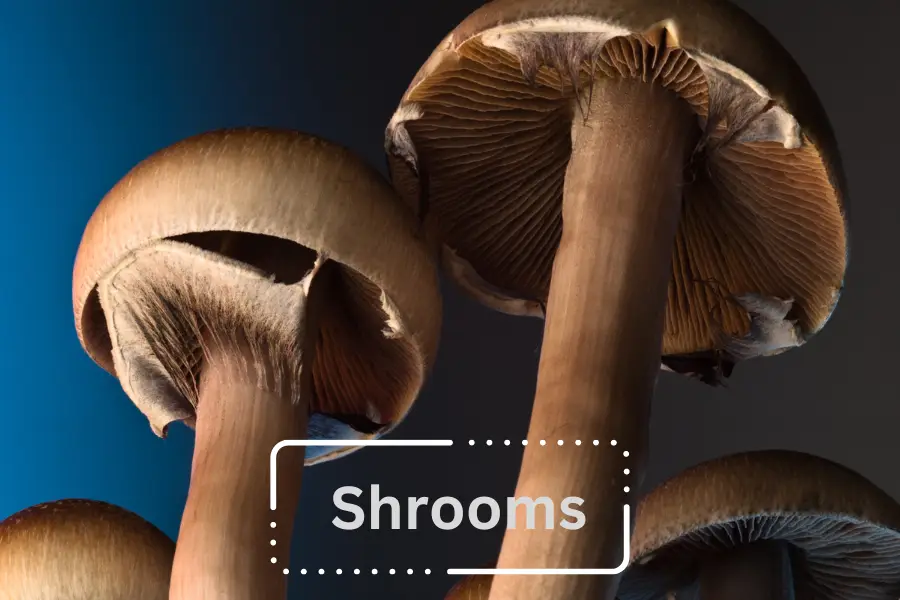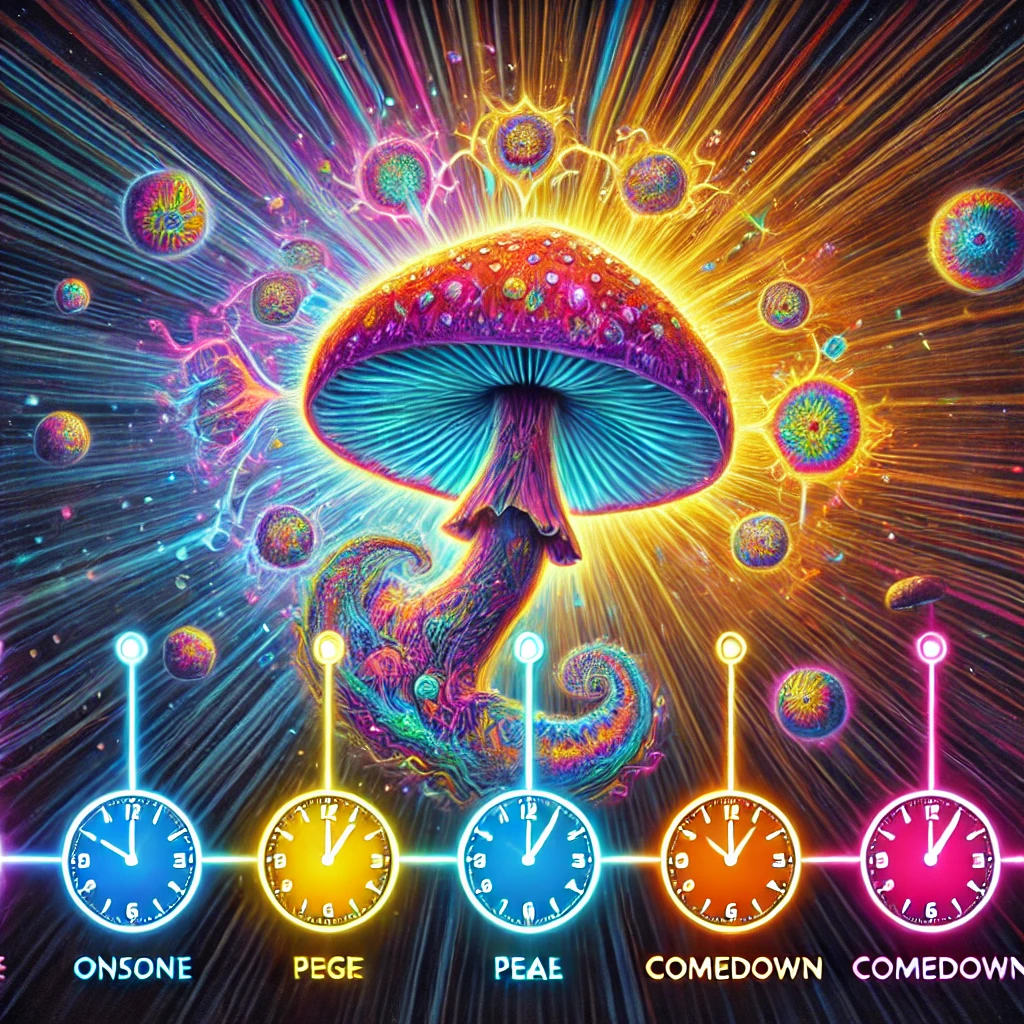Table of Contents
Psychedelic mushrooms, commonly known as shrooms, have gained widespread attention in recent years due to their potential therapeutic benefits and the lasting impact they have on the mind and body. But how long do shrooms last? Understanding their duration, benefits, and effects is essential, whether for health and fitness purposes or broader wellness goals. Shrooms, a natural product from specific types of fungi, have been used for centuries by various cultures for medicinal and recreational purposes. Today, their popularity is surging again, particularly as more people explore alternative treatments for mental health and holistic well-being.
Key Points of Shrooms
Shrooms typically last 4-6 hours regarding their peak effects, though subtle aftereffects can last much longer.
Shrooms offer potential benefits for mental health, including treating anxiety, depression, and PTSD.
Global production of shrooms is increasing due to their rise in medical research and alternative wellness practices.
How Long Do Shrooms Last? An Overview of the Experience
The duration of a mushroom trip is often one of the most crucial questions for those considering their use, whether for health benefits or personal exploration. Typically, the effects of psilocybin (the active compound in shrooms) last about 4-6 hours after ingestion. The impact timeline can vary based on several factors, including the type of mushroom consumed, the dose, the user’s metabolism, and their mental state at the time of consumption.
The Timeline
Onset: 20-60 minutes after ingestion
Peak Effects: 2-4 hours into the experience
Comedown: Begins around hour 4 and lasts until hour 6 or 7
While the acute effects fade within a few hours, residual sensations, including introspective or emotional aftereffects, can last for days or weeks. For therapeutic users, the lasting benefits of a single session can extend far beyond the immediate high, offering emotional clarity and mental health improvements.
Factors Influencing Duration
Dosage
Higher doses tend to lengthen the trip and intensify effects.
Consumption Method
Whether the shrooms are consumed fresh, dried, or in tea affects how quickly the body absorbs psilocybin.
Personal Metabolism
Individual body chemistry can significantly influence the experience.
The Health Benefits of Shrooms
While the recreational use of shrooms is popular, their potential health benefits are gaining more recognition. Researchers are increasingly focusing on psilocybin therapy as a treatment for various mental health disorders. The psychoactive compound in shrooms interacts with serotonin receptors in the brain, leading to profound shifts in consciousness that can have therapeutic outcomes.
Key Health Benefits
Reduced Anxiety and Depression
Clinical studies have shown that psilocybin can help alleviate symptoms of major depression and anxiety, especially in cases resistant to traditional treatments.
PTSD Treatment
Psilocybin-assisted therapy is showing promise as a treatment for post-traumatic stress disorder, helping individuals process trauma in a supportive and controlled environment.
Addiction Recovery
Shrooms have been used in therapeutic settings to aid in addiction recovery, particularly for substances like nicotine and alcohol.
In addition to mental health benefits, some users report enhanced creativity, spiritual awakenings, and emotional breakthroughs after consuming shrooms.
Quote
“Psilocybin offers a new avenue for people struggling with mental health issues, providing deep insights into one’s emotional state.” – Dr. Andrew Weil.
Different Uses of Shrooms in Health and Wellness
Beyond their role in mental health therapy, shrooms are being explored in various health and fitness sectors. Their ability to shift consciousness can also benefit physical well-being and mindfulness practices.
Common Health and Wellness Applications
Mindfulness and Meditation
Some users find that low doses of shrooms, known as microdosing, can enhance focus and deepen meditative practices.
Enhanced Emotional Resilience
By confronting emotions and deep-seated fears during a trip, users often have greater emotional resilience and a stronger sense of self.
Pain Management
Early research suggests that shrooms may help manage chronic pain by altering pain perception.
The effects of shrooms on personal fitness routines are still being studied. Still, anecdotal evidence suggests that many users feel more connected to their bodies and achieve heightened awareness during physical activities, from yoga to running.

The Production of Shrooms Around the World
With the growing demand for both recreational and therapeutic use, shroom production has become an international industry. This global rise in shroom production is a testament to the increasing acceptance and exploration of alternative wellness practices. Countries with more progressive drug policies, such as the Netherlands and certain regions in the U.S., are leading the way in legal cultivation and research.
Global Hotspots for Shroom Production
The Netherlands
Known for its liberal stance on psilocybin truffles, the Netherlands allows the sale of specific types of shrooms, making it a significant hub for production.
Canada
With its lenient stance on psychedelic research, Canada has several companies cultivating mushrooms for medical and research purposes.
United States
In states like Oregon, psilocybin has been decriminalised, and there is increasing interest in legalising its use for therapeutic purposes.
The shroom market continues to expand as more people seek natural alternatives for mental and emotional well-being. Global production is likely to increase as the legal framework evolves and research highlights the health benefits of shrooms.
The Science Behind Psilocybin
Psilocybin is the naturally occurring psychedelic compound found in over 180 species of mushrooms. When ingested, it is converted by the body into psilocin, which binds to serotonin receptors in the brain, particularly those associated with mood and perception. This interaction results in altered states of consciousness, mood enhancement, and increased introspection.
How Shrooms Can Help Daily Life
One growing trend is the use of microdosing – taking sub-perceptual doses of psilocybin to benefit from its effects without the full-blown psychedelic experience. Many report that microdosing enhances focus, creativity, and emotional balance without the intensity of a full trip.
Risks and Considerations of Using Shrooms
As with any substance, there are risks associated with using shrooms, particularly for individuals with a history of mental illness or those taking other medications. While generally considered safe in controlled environments, the potential for a “bad trip” is always present, especially when taken in large doses or stressful settings.
Shrooms and Fitness
While the mental health benefits of shrooms are well documented, their use in fitness is still an emerging area of interest. For fitness enthusiasts, the potential of shrooms to help them connect more deeply with their bodies, increase endurance, and improve recovery times is intriguing. More research is needed to validate these claims, but the potential is exciting and worth exploring.
How to Prepare for a Shroom Trip
Preparing for a mushroom experience is essential for maximizing its benefits and minimizing potential risks. A few key steps include setting a positive intention, choosing a safe and comfortable environment, and considering the dosage. Starting low and going slow are the general rules for beginners.
Recommended Checklist
Choose a calm, familiar environment.
Have a trusted friend or “trip sitter” available.
Stay hydrated and eat a light, healthy meal beforehand.
Conclusion
Shrooms offer a range of benefits, from therapeutic potential to mental and emotional wellness. The duration of the effects can vary, but they typically last 4-6 hours, with long-term benefits extending much further. As research continues, the global production of shrooms is likely to increase, providing more opportunities to explore their health and fitness potential. Whether you’re considering shrooms for therapy, wellness, or curiosity, preparing well and staying informed is essential. What are your thoughts on shrooms therapeutic potential? Let us know in the comments, and don’t forget to check out our other blogs for more insights into holistic wellness!
FAQs
How long do the effects of shrooms typically last?
Shrooms typically last 4-6 hours, with residual effects potentially lingering for days.
Can shrooms be used for medical purposes?
Yes, psilocybin, the active compound in shrooms, is being studied for its potential to treat mental health disorders such as depression and PTSD.
What is microdosing with shrooms?
Microdosing involves taking small amounts of shrooms to benefit from enhanced focus, creativity, and emotional balance without a whole psychedelic experience.
Are there any risks associated with taking shrooms?
Yes, shrooms can cause “bad trips,” particularly in high doses or stressful environments. They may also interact with other medications.
Where can shrooms be legally consumed?
Countries like the Netherlands and states like Oregon have decriminalized psilocybin for therapeutic or recreational use.

